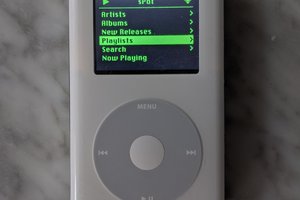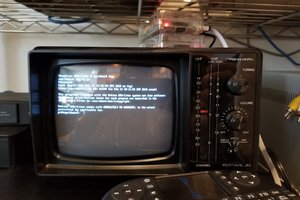***This bit describes my initial, okay-but-inauthentic IR remote-based approach***
I have connected a Raspberry Pi Model B's composite video/analogue audio outputs to the Decoder SCART on the receiver, and I've made a very simple (one-wire) modification to fool the receiver into thinking the PC's video output is a decoded PAL satellite picture.
I stream the TV channels via Streamlink, using VLC full-screen in command-line mode.
Then, using an Arduino Pro Mini, an IR sensor and a bit of Python code, I've taught the Pi to respond to the Amstrad's remote control handset, so it changes channels in the VLC playlist in time with my button-presses. This setup currently sits alongside the receiver - though I reckon I can mount it inside with a bit of ingenuity.
The setup is a bit clunky at the moment, but it works, and the vintage '90s OSD graphics from the receiver make it a wonderfully retro way to watch streaming TV. In particular, the channel names change on the Amstrad (roughly) in time with the actual channel changes in VLC, roughly as they would have done had I been watching them via real analogue satellite, back in 1993. I'll upload a video at some point to show this in action.
I'd like to add a teletext signal output from the Pi's composite video port, as I have an (unconfirmed) hunch that the VBI time data included within a teletext signal will set the SRD510's on-screen clock to the correct time, which would be a nice finishing touch. Also, it'd be cool to press TEXT and get (the brilliant) NMS Ceefax service displayed on top of my television picture.
 James Fossey
James Fossey
 Ian Charnas
Ian Charnas
 Maciej Witkowiak
Maciej Witkowiak
 Guy Dupont
Guy Dupont
 Nick Matantsev
Nick Matantsev
Thanks for the blast from the past with the '90s Sky Analogue box! It's amazing how technology has moved on, making those old analogue satellite receivers obsolete.